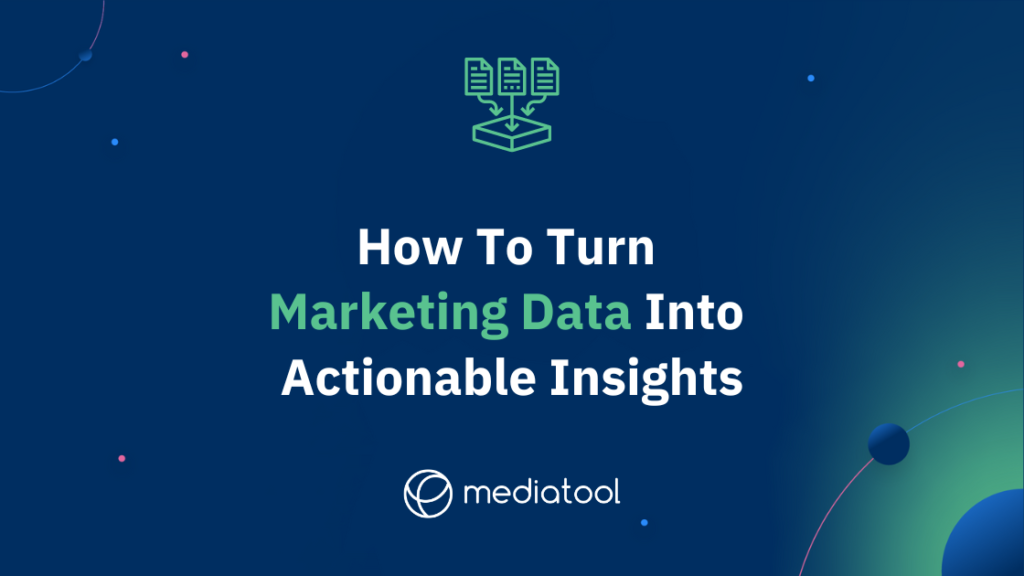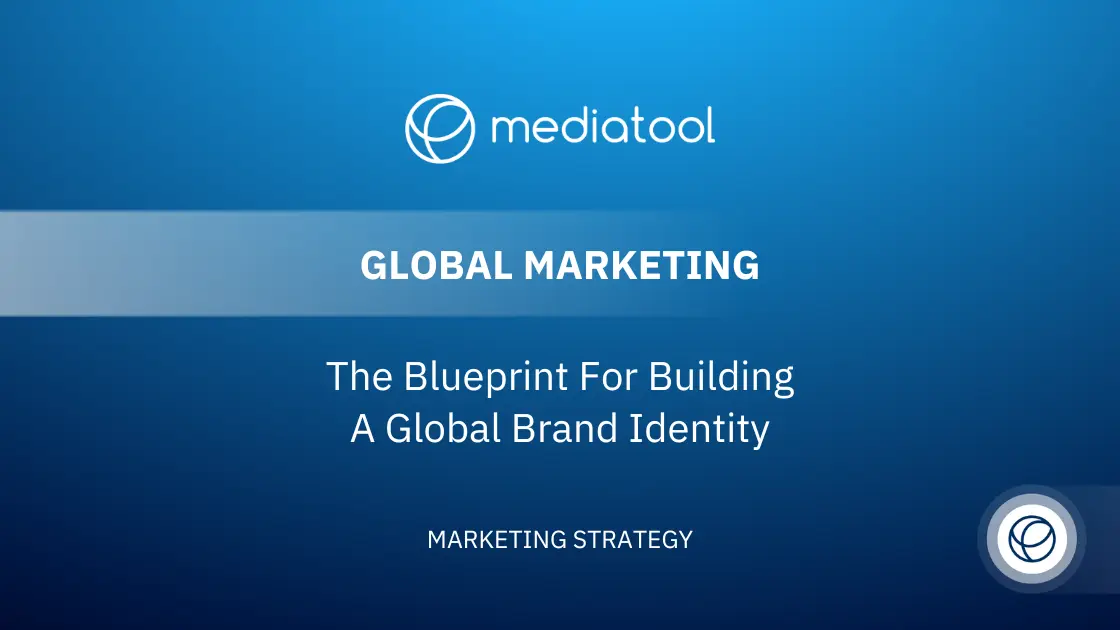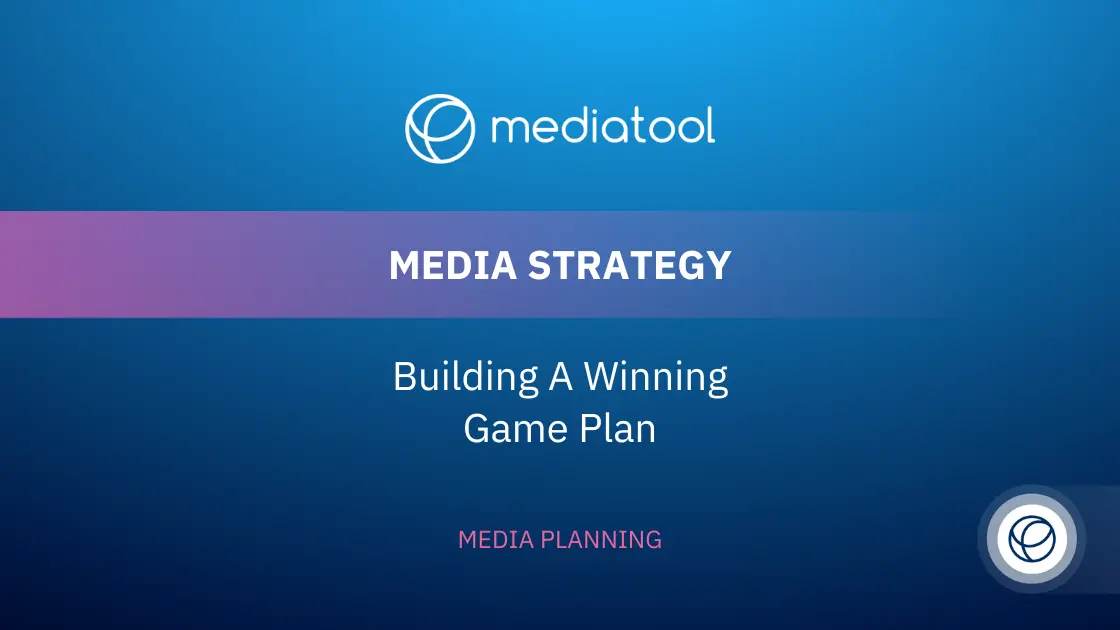Working in marketing, you’re no stranger to the ocean of data that comes with the territory. Marketing data, customer data, and consumer data – it’s all part of the game.
But let’s be real: this data can sometimes feel more like a heavyweight than a helper.
Think about it.
Every day, marketing teams are bombarded with thousands of data points. It’s a lot.
And with everyone already stretched thin, who’s got the time to sit there and sift through it all? Not to mention, many teams are still stuck dealing with data silos.
Yes, it’s hard to believe in this day and age, but it’s true.
Data should be this solid, reliable thing that tells us what to do next in a marketing campaign, shows us if we’re doing well, and helps us prove our worth in ROI terms.
But what’s happening instead?
A whole lot of marketers are playing what feels like a guessing game. They pick what data to show in meetings, even when they know it might not fully represent how effective their marketing really is.
And then there are those who get so caught up in trying to interpret the data that they end up doing nothing. They’re stuck, and as a result, progress stalls.
On one hand, data is crucial – it’s king. On the other, it’s a source of major confusion and anxiety for many teams.
The thing is, lots of marketers have more data than they know what to do with, but not enough real insight. That’s where we come in. We’re here to change that. If you’re tired of the same old and ready to see how Mediatool can turn your data into actionable insights, skip the chit-chat and book a demo.
But if you’re interested in learning the steps, stick around. We’ll cover how to use marketing analytics, understand your target audience, improve customer acquisition and retention, and make more informed marketing decisions.
We’ll dive into how a data-driven marketing strategy can transform your marketing efforts, from email marketing campaigns to social media strategies, and how to use analytics tools to get the most out of your marketing spend. Ready to break free from the data overload and make data work for you? Keep reading.
Why is Marketing Data Important?
Now, let’s address the crucial question: why is marketing data so incredibly important? You might be wondering, “Okay, data is all around, but what’s the big deal?”
Firstly, marketing data is far more than just a jumble of numbers and charts. It’s the backbone of your marketing strategy, offering deep insights into demographic data and customer behaviors. Imagine it as the compass guiding your marketing campaigns, steering you through the complexities of consumer preferences, and ensuring you connect effectively with your right audience.
But that’s just the start. Marketing data is pivotal for fine-tuning your marketing efforts. With meticulous data collection and analysis, you can customize your campaigns for specific demographic groups, monitor various marketing channels, and dynamically adjust your data-driven strategy. Think of it as real-time data analysis tailored for marketing – a crystal ball revealing the effectiveness of your strategies, guiding where to allocate your marketing spend for optimal ROI.
Let’s get into customer retention and acquisition. Marketing data sheds light on why customers stay loyal or why they drift away. This aspect is crucial – it’s about nurturing your existing customers while also attracting new ones. By leveraging data-driven insights, you can craft personalized customer experiences, fine-tune your marketing messages, and forge stronger bonds with your customers.
Here’s the clincher: data-driven marketing is not just a buzzword; it’s an essential survival tool in today’s competitive market. In a world where every brand is fighting for consumer attention, a solid data-driven marketing strategy can make you stand out. It’s like having an ace up your sleeve, helping you comprehend consumer interactions, anticipate market trends, and maintain a competitive edge.
Now, to all the marketing teams out there, this is your moment to shine. Embrace the power of data, utilize the analytics tools at your fingertips, and transform this wealth of information into actionable insights. Whether it’s through social media campaigns, email marketing, or leveraging various marketing channels, remember, data is your strongest ally. And it’s not just about gathering all this data; it’s about scrutinizing it, comprehending it, and employing it to make data-based decisions.
Incorporating marketing data into your strategy is about more than just understanding your audience; it’s about creating a marketing plan that’s based on solid data records, understanding the nuances of your campaign data, and utilizing advertising tools effectively. It involves keeping your marketing dashboard up to date, tapping into big data for comprehensive audience insights, and ensuring every decision is grounded in data analysis.
Remember, the benefits of a data-driven approach are manifold. It leads to cost savings, helps generate quality leads, improves conversion rates, and ensures your marketing activities are aligned with the latest market patterns. Marketing data isn’t just about numbers; it’s about gaining a deep understanding of your customer journey, enhancing customer experiences, and ensuring every piece of customer information is used to deliver relevant content and personalized messaging.
Next up, the challenges of data driven insights and decision-making.
Main challenges when generating insights from marketing data
Turning data into insights comes with it’s own list of obstacles. As marketers we have so much data but not many know how to turn it into insights. Those who might feel like they know how to turn it into insights, don’t trust their data. Many data-driven marketers claim issues such as: poor quality of data, not knowing if it’s reliable, and reactive decision making due to the pressure to show ROI.
When performance drops, there are so many different factors that could have led to that drop. Did a competitor increase their ad budget, meaning yours performed worse? Could your content have been in a different format? Or did Apple bring in another privacy update, scuppering your success?
In fact, because of recent privacy updates and lack of access to personalized consumer data, pulling solid insights from data has become even more important.
“Legacy approaches to advertising and marketing technology simply won’t work in the future state. Brands and the ecosystems that support them need to… start thinking about measurement in the absence of user-level data.”
Jess Simpson, Publicis Media
Jess Simpson from Publicis Media states “legacy approaches to advertising and marketing technology simply won’t work in the future state. Brands and the ecosystems that support them need to… start thinking about measurement in the absence of user-level data.”
Instead of focusing on the loss of personalized data, marketing teams need to find a better way to talk to the users and form closer relationships with consumers who are happy to share their information.
Now that we’ve painted the all-too-familiar picture of the struggle of garnering insights from marketing data, let’s take a look at what you can do to combat this.
9 Steps to Turn Marketing Data Into Actionable Insights
When it comes to pulling value from data, marketers need to think like scientists. As daunting as that sounds, the principle is actually pretty simple. And scientists have been generating insights from data for hundreds of years.
1. Stop getting in your own way
Before we get into the science of data-driven insights, we want to first acknowledge a pivotal step in being able to find insights and opportunity. And that starts with your mindset and overthinking.
In order to make the decisions that help you reach your targets, it’s important to take a step back and change how you approach the data. A reactive marketing team is not a good one! Instead of letting your team fall into bad habits, you need to establish what is meaningful to your campaign (and deserves your attention) and what is just a simple fluctuation in results (and can be left alone).
Teams that use data to learn and improve are far more successful than those who are laser-focused on each and every number. Knowing how to turn the data into the right action is the secret sauce that you could be missing. And getting it right starts with your mindset.
So this means yes take the data into consideration, but don’t overthink every aspect of what it might mean. You’ll only be getting in your own way and stop you and your team from reaching your objectives in the long run.
2. Consolidate your marketing data
Trying to find insights in your data without first storing it in one place, is a big waste of your time. We all know how detrimental siloed data can be–from losing important information, missing lucrative opportunities, to human error. But if that isn’t enough to convince you, at least think of how much time–time you’ll never get back–it takes your team to scour through different platforms trying to make sense of it. Yikes!
Turning data into insights is all about finding stories within it that help you improve. By bringing all your sources together in one platform, you have the full picture to work with.
Lucky for you, Mediatool does just that!
Create your own data taxonomy and rules that your whole team sticks to and your data will never risk being unreliable again. Once you’ve set up your custom-made plans, plug in the channels you want to track and watch the data roll on in. Product level, campaign level or overall strategy level–you can rest assured your data is clean and correct.
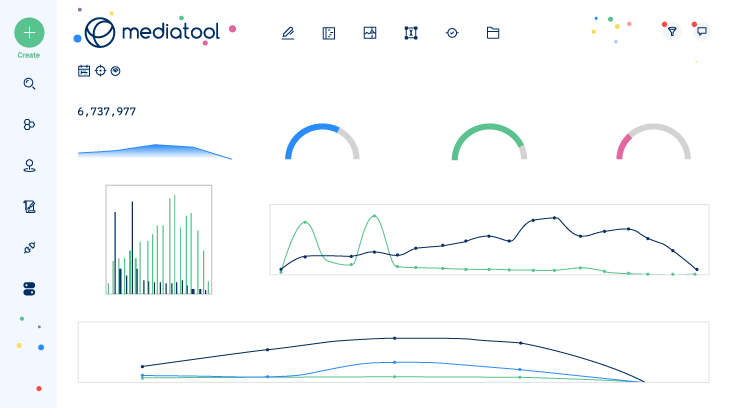
3. Ask the right questions
Before you dive into the data, you need to set a clear intention of what you want out of it. What do you want the data to tell you?
Like an interview, always come prepared with questions. That way, you stay on track, review the data that is needed at that moment in time, and focus on the insights that will make a true impact on your marketing goals.
For example, for a cosmetics brand, some questions might be:
- How many people who clicked through from an Instagram ad abandoned cart?
- What is the average amount of products visitors buy per visit?
- Does this number differ when the traffic was generated through TikTok compared to traffic from Youtube?
4. Make sure you’re tracking the right metrics
Staring at the wrong metrics is a big waste of everybody’s time and is not going to generate groundbreaking results anytime soon.
We are of course referring to vanity metrics. You know the type, the figures you put into reports because you know it’ll make you look good? Examples include page views, sessions and social media followers. While they may make you look good, they’re generally not worth spending your time on as they don’t usually help answer questions that will move a campaign forward.
So, once you’ve found the questions you want to answer (step 2), figure out what metrics are going to help you answer these questions and track those instead. We can’t tell you what the metrics should be as it is specific to your campaign, goals, company and industry.
5. Segment your marketing data
Dividing up your data into segments can help you better understand the insights from it. There are a lot of different ways you can segment your data, explained further by Lotame here.
Decide on one way you’re going to segment it, for example Generational, where you group your audience depending on shared preferences, personality traits, behaviors and where they hang out online.
By segmenting your audience and the data you currently have on how they engage with your product or marketing, you can find insights specific to that group and create a more personalized experience.
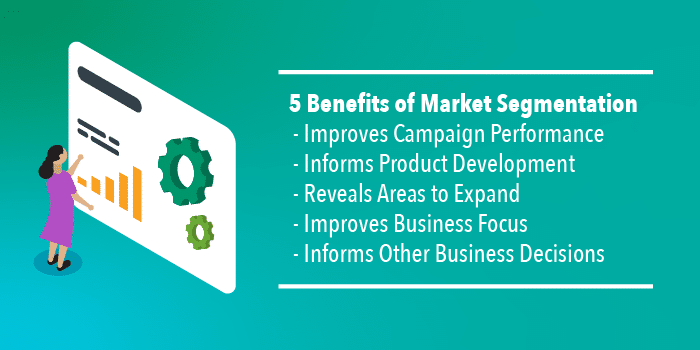
(Lotame)
6. Take time frames and context into consideration
A big error many make is being reactive to data that was only viewed in a specific time frame, for example as it’s happening in real time. To pull valuable insights from the data, you need to instead consider what was happening in the rest of the world at that time.
Going back to our cosmetics example, was there a dramatic slump because of the pandemic and no one was leaving the house, therefore not buying makeup? Or was there an increase in sales because Kate Middleton was cited as wearing one of your eye-shadows?
This is important because neither were a direct result of your campaign. So while they could generate positive or negative performance, it’s still important to zoom out and look at the whole wider time period to understand context and other possible influences.
You might think your new email campaign is incredible and think that is the insight, but it could just be that Kate Middleton’s makeup artist is a fan.

(Getty Images)
7. Outline your hypothesis
Your campaign will be part of a wider marketing strategy and objectives, which will be working towards the even-wider business goal.
You’ve decided what questions you want to answer and what metrics you’ll use to find the right data to answer it. But, before you dig into the data to find your answers, you need to create a hypothesis.
Let’s say we take the question from step 2: How many people who clicked through from an Instagram ad abandoned cart?
A good hypothesis provides insights whether it is proved, disproved or inconclusive, meaning that either way you’re gaining valuable information to help you reach your marketing objectives.
In order to write your hypothesis, you need to follow these steps:
- It should be a statement, not a question
- It should be a statement that can be confirmed or disproved
- The aim of the statement should be to learn
- The statement should be followed by a reason
So using our question, some examples might be:
- Reducing the amount of clicks from the product landing page to the shopping cart will reduce cart abandonment, because those who are keen to buy will be able to purchase quicker.
- Changing the Instagram Feed ad to an Instagram Story ad will increase sales because our target audience are more engaged on Stories.
- Focusing ads on TikTok instead of Instagram will not increase cart abandonment because our click through rate is similar on both.
The hypothesis should help you learn more about your customers, marketing funnel and guide you to make better decisions moving forward. They’re also a great way to make sure you’re always thinking ahead to the end goal, instead of wasting time on data that won’t help you get there.
8. Test the hypothesis to draw insights
So you’ve got your questions, metrics, segments, time periods and hypotheses ready. Now it’s time to test your hypotheses in line with the questions you want to answer.
Review the data to find whether your hypothesis is correct or not. To experiment even further, use this as a chance to A/B test the campaign and track the new data to find out what it’s really telling you and where there’s room for improvement.
Regardless of if your hypothesis is right or wrong, you’ll be able to draw conclusions and make decisions on what action to take next based on these insights.
This may have got a bit science-y but it works to help you reach your goals, in a way that many scientists already do but most marketers don’t!
9. Showcase your data visually
Now that you have your insights and have run tests to prove what move to make next, you’ll want to report the results to back up your decisions.
Raw data means nothing to most people, but like we said before, data should be used to tell a story. Displaying it in a visually appealing report will help you to not only tell the story but also help you and the wider team better understand it.
There are lots of tools out there that can create marketing reports. But Mediatool ties them together in custom-made dashboards to help you find and understand insights quicker, so you have more time to take action. And it all ticks away in the background, generating reports while your data is tracking in real-time, meaning you don’t have to build it, it’s simply there waiting for you.
(Mediatool’s reporting dashboard)
Wrapping up
Getting insights from your data is a continuous process. And the more you practice this, the better you’ll get at it, and the better your performance will be.
If you take anything away from this blog we hope you understand how to navigate your data and turn it into insights, rather than being overwhelmed by it.
We built Mediatool to give marketers like you confidence and control over your data. With Mediatool by your side, this process is streamlined and simple, enabling you to learn and pivot much faster.
Sounds too good to be true, right? Why don’t you see it for yourself?
